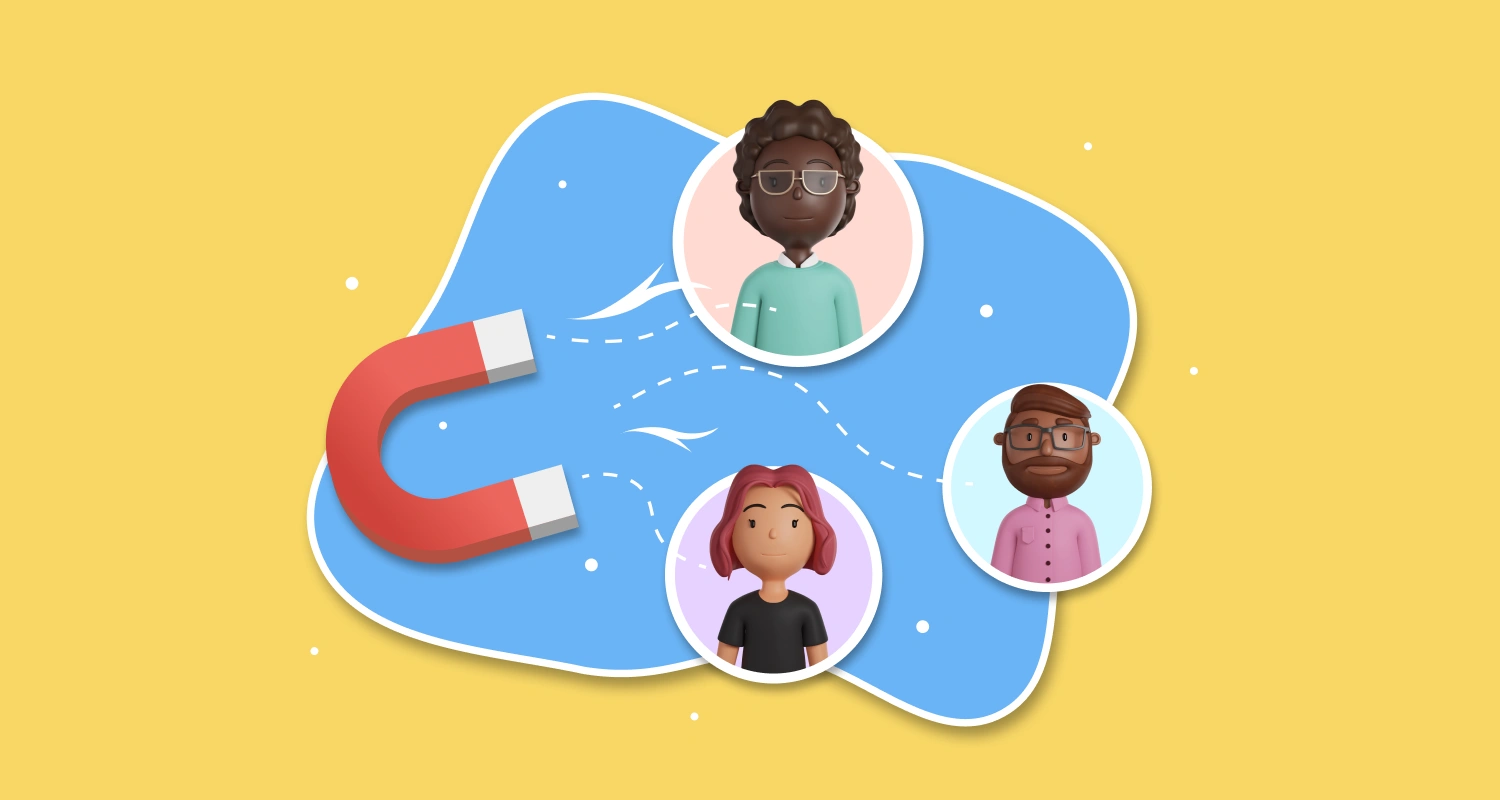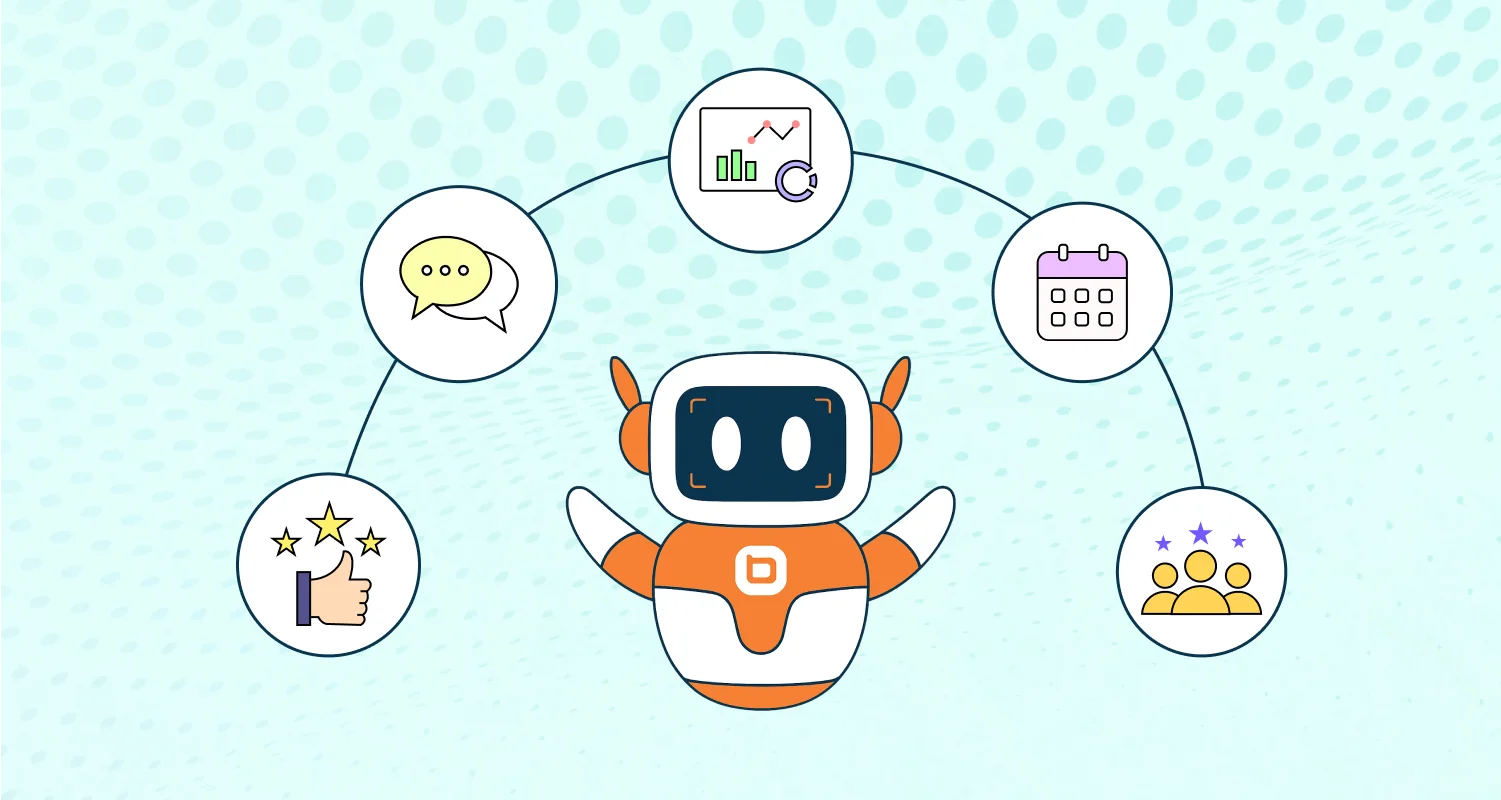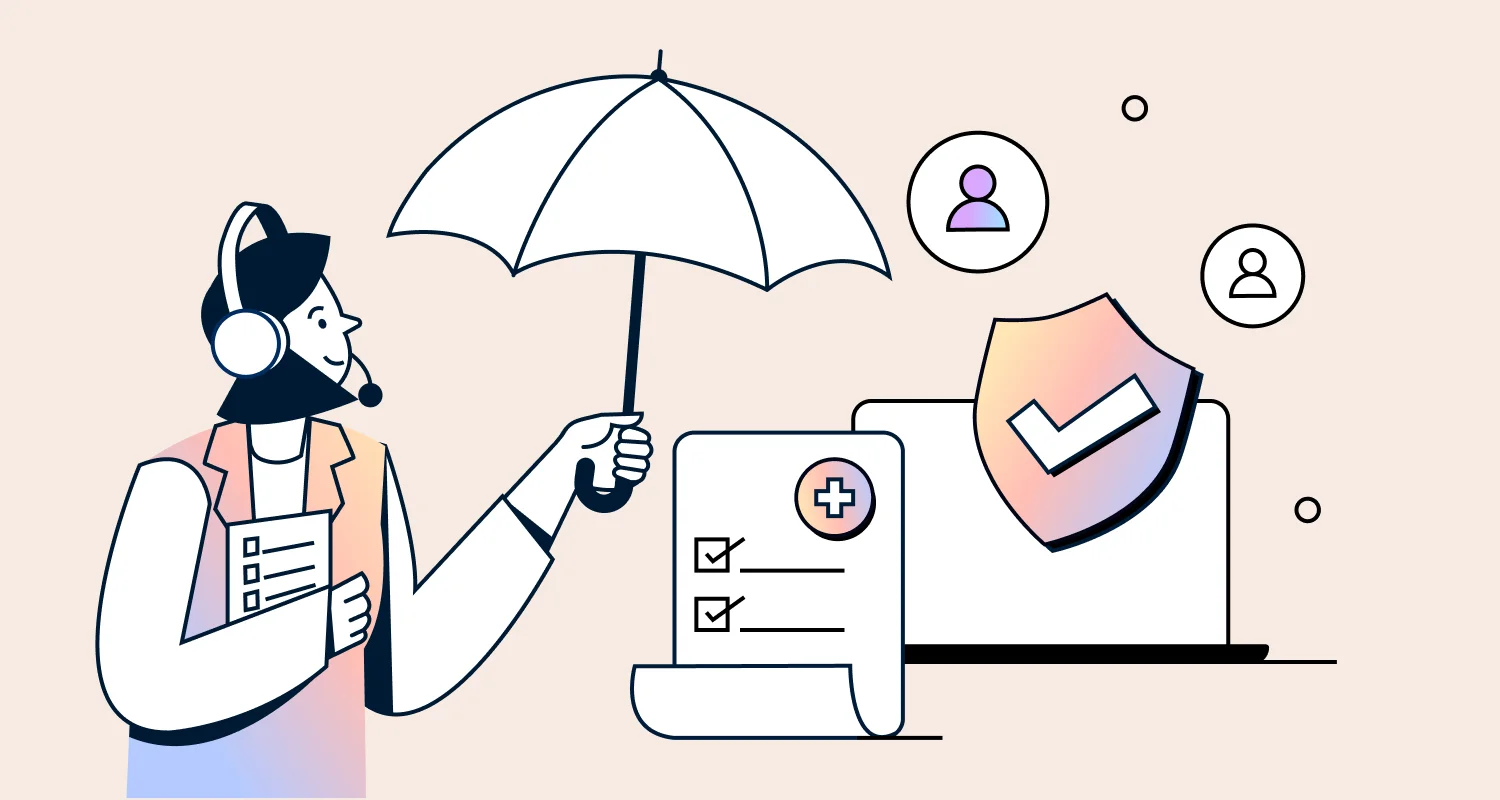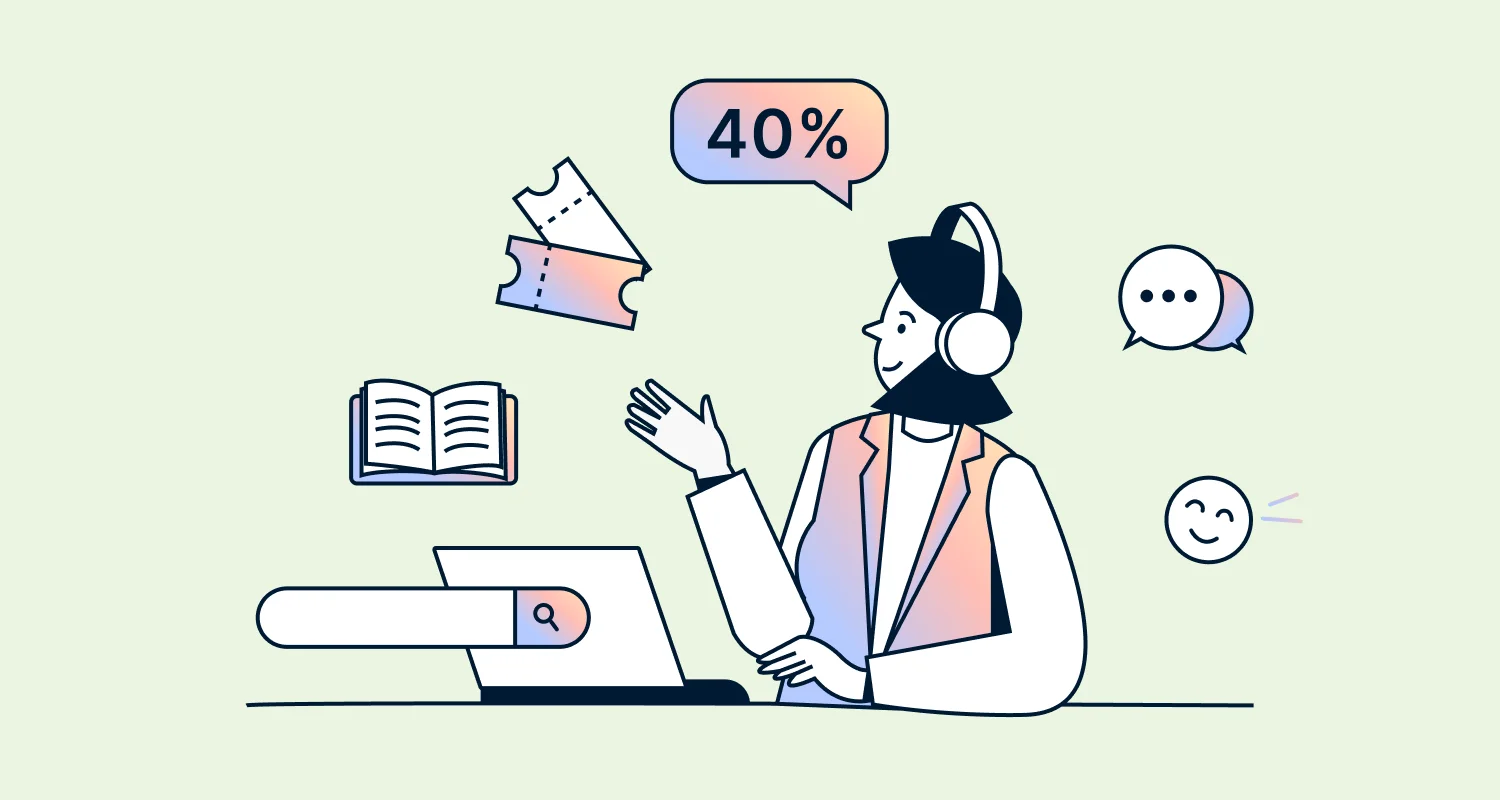Businesses invest heavily in attracting new customers, but the real challenge lies in keeping them. Why does this matter? Because customer retention drives revenue.
According to Smile.io, 41% of a business’s revenue comes from just 8% of its customers, and the top 5% of loyal buyers generate 35% of the total.
This crucial statistic highlights that these repeat customers are not only valuable, but also incredibly profitable.
Whether you lead a customer support team, manage a help desk, or run a SaaS business, customer retention directly impacts your bottom line.
In this blog, we’ll discuss how to retain more customers by creating a seamless, positive experience at every touchpoint. We will also share the strategies, metrics, and real-world examples you need to keep your customers coming back.
What is customer retention?
Customer retention is a company’s ability to keep existing customers coming back over time and prevent them from switching to competitors after engaging with your brand.
It reflects how effectively your organization, and its products or services meet customer needs and deliver satisfaction.
Why is customer retention important?
Customer retention reflects how well you meet or exceed your customers’ expectations, making it essential for business success. Beyond that, it delivers significant benefits for any industry.
- Increases revenue and profitability: Retained customers make repeat purchases and respond positively to upselling and cross-selling, leading to higher customer lifetime value and more revenue.
- Strengthens brand loyalty: Customer retention strategies such as loyalty programs and personalized experiences deepen connections and build trust, making customers less interested in competitors.
- Enhances business stability: High retention rates create predictable revenue streams and reduce the pressure to constantly acquire new customers.
- Saves on customer acquisition costs: Retaining customers is far more cost-effective than acquiring new ones, so companies with higher retention typically have lower customer acquisition costs.
- Boosts brand advocacy: Retained customers already trust your brand and know your product works, making them powerful brand advocates who drive referrals.
Difference between customer acquisition and retention
Customer acquisition refers to the process and efforts involved in attracting new customers to a company’s products or services, typically through targeted marketing strategies.
In contrast, customer retention focuses on engaging and nurturing existing customers after they have made an initial purchase.
The goal is to build long-term customer loyalty, encourage repeat business, increase customer lifetime value, and reduce churn through personalized communication, exceptional support, and value-driven experiences.
Understanding the distinction between customer acquisition and retention is key to building a sustainable growth strategy.
Here’s a quick comparison to break it down:
| Aspect | Customer Acquisition | Customer Retention |
| Definition | Attracting and converting new customers | Engaging and keeping existing customers |
| Goal | Grow the customer base | Boost loyalty and maximize customer lifetime value |
| Strategy focus | Marketing campaigns, promotions, and lead generation | Customer service, relationship nurturing, loyalty programs |
| Cost | Usually higher due to advertising and outreach | More cost-effective over time |
| Measurement metrics | Conversion rate, new leads, customer acquisition cost (CAC) | Retention rate, churn rate, customer lifetime value (CLV) |
| Timeframe | Delivers short-term results | Focuses on long-term business growth |
| Customer relationship | Just getting started | Already established and growing stronger |
What are the key customer retention metrics to consider?
Customer retention metrics help you measure how effectively your business keeps existing customers engaged and loyal.
By analyzing these retention KPIs, you can prioritize the most impactful customer churn reduction methods and guide your workforce toward success.
First, let’s explore key metrics that reveal the strength of your current customer base.
Customer retention rate
It evaluates the capability of an organization to hold on to its customers for a specific period of time.
How to measure customer retention rate
To estimate the customer retention rate, set the time period you want to measure (last year, quarter, month, week) and collect the number of customers:
- At the start of the time
- At the end of the time
- Newly arrived during the time
You can then calculate the customer retention rate using the formula below:
CRR = ((Customers at end of period – New customers during period) / Customers at start of period) × 100

Customer lifetime value (CLV)
Customer lifetime value denotes the total predictable revenue a customer will bring throughout their dealings with a business. CLV enables you to determine a customer’s potential lifetime value rather than just the value they bring at the time of their initial purchase.
How to calculate customer lifetime value (CLV)
Calculate the averages of the following:
- Customer lifespan
- Purchase value
- Number of purchases
Multiply the average purchase value by an average number of purchases and then multiply the obtained value by the average customer lifespan as shown in the formula below:
CLV = Average purchase value × Average number of purchases × Average customer lifespan

Customer satisfaction
A customer satisfaction survey states a customer’s level of satisfaction with your brand, product, or service.
How to calculate customer satisfaction (CSAT)
To calculate the CSAT score, gather the number of positive responses and the total number of responses obtained from customers and apply the below formula:
CSAT (%) = (Number of positive responses / Total responses) × 100

Customer attrition rate
This is the rate describes the number of customers a company loses over a certain period of time.
How to calculate attrition rate
To compute the attrition rate, divide the number of customers lost during the time period by the number of customers at the start of the period as shown in the formula below.
Attrition rate (%) = (Customers lost during period / Customers at start of period) × 100

Net promoter score
Net promoter score (NPS) gauges your customers’ desire to recommend your product, brand, or service.
How to calculate net promoter score (NPS)
Estimate your NPS by subtracting the percentage of detractors from the percentage of promoters in your customer feedback surveys using the formula below:
NPS = % Promoters – % Detractors

Use BoldDesk’s NPS calculator to instantly generate accurate scores, gain clear insights into customer sentiment, and eliminate the hassle of manual calculations.
Once you understand how to measure retention, you can focus on loyalty strategies that improve these metrics.
Customer retention strategies to consider
Customer retention strategies will change and develop continuously as your company grows.
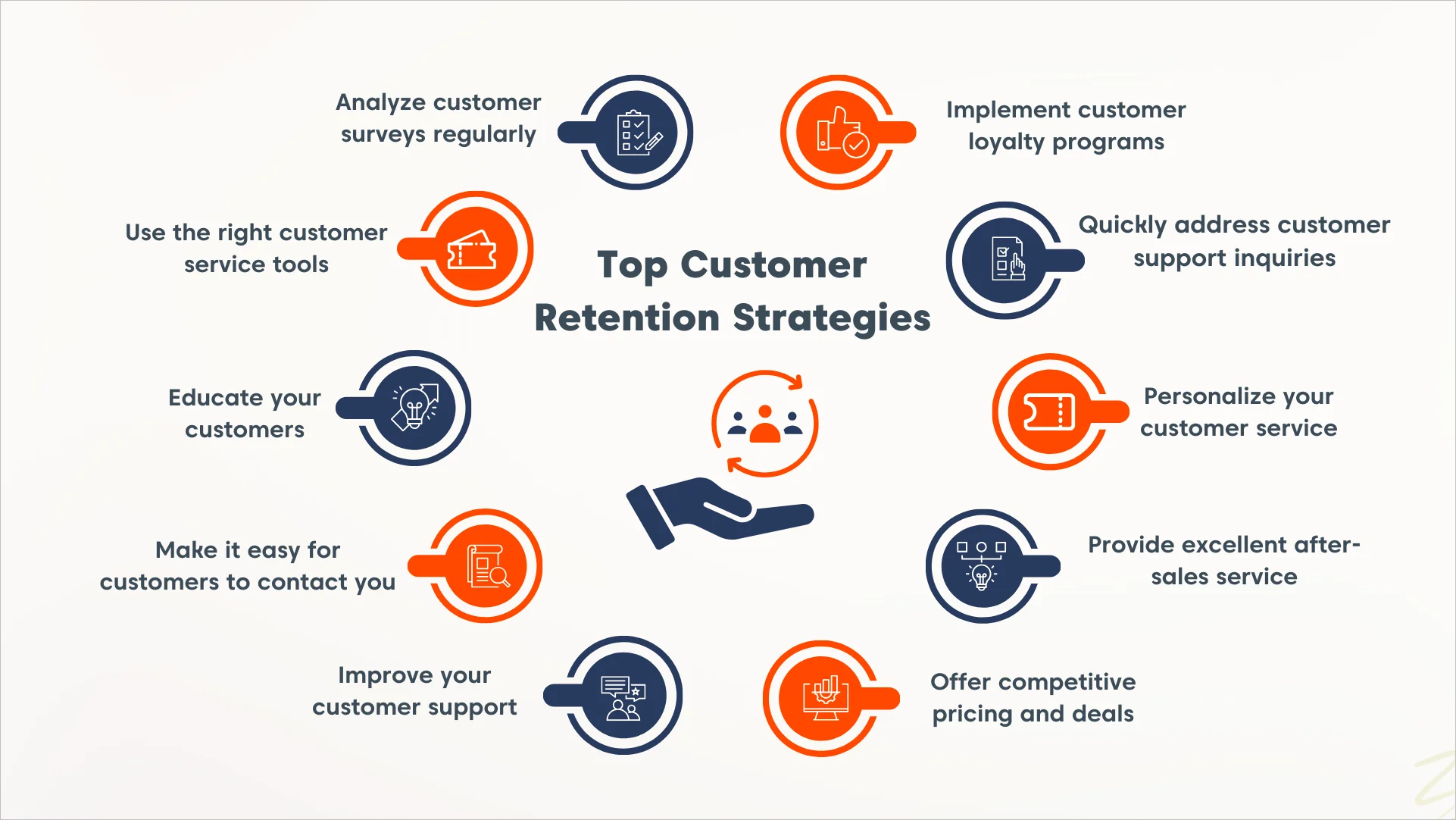
Here are some practical concepts for improving customer retention:
1. Analyze customer surveys regularly
Regularly sending and analyzing customer surveys reveal how customers perceive your brand and guide actionable improvements.
For example, net promoter score (NPS) surveys help you understand the role of word-of-mouth in growing your business.
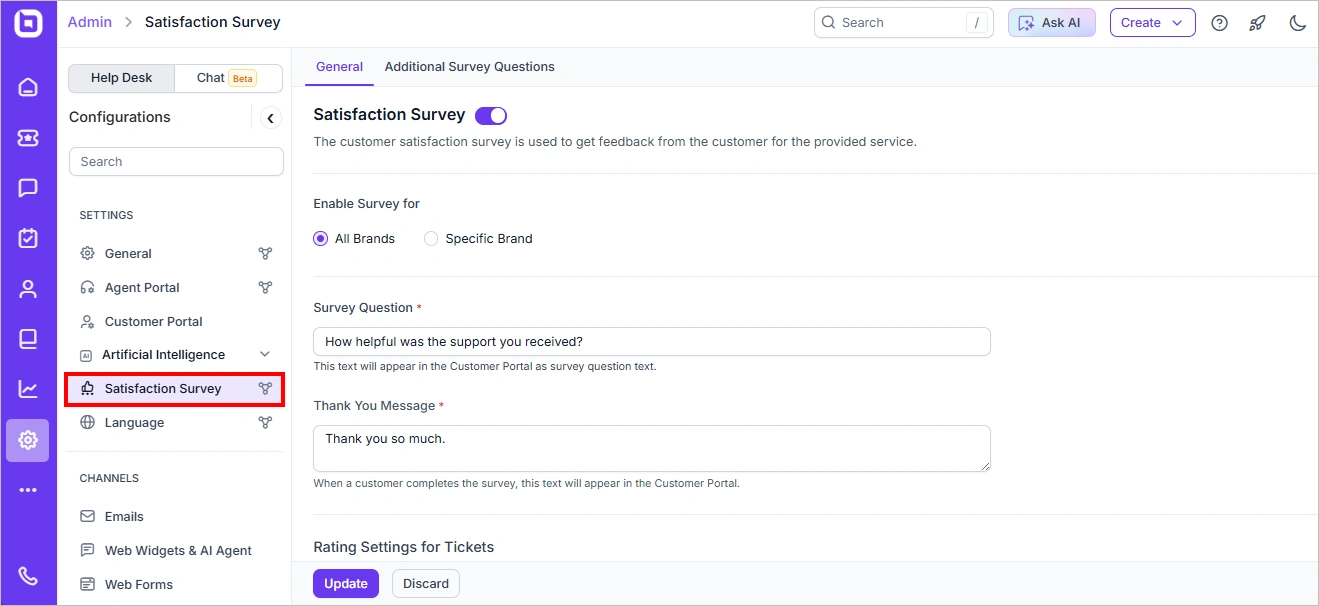
BoldDesk’s CSAT surveys for instance allow customers to rate their experience on a scale from “very satisfied” to “very dissatisfied.”
These CSAT scores provide actionable insights that help agents improve service ultimately driving higher customer retention.
2. Use the right customer service tools
In the early stages of your company, customer volume and issues are relatively low. However, as your customer base grows, so does the number of support requests.
Manual processes quickly become time-consuming and inefficient, requiring more effort to manage. To overcome this challenge, adopt customer service tools like help desk software to streamline workflows and enhance efficiency within your support team.

Modern customer support platforms are equipped with powerful AI capabilities, such as AI Agents, that enable faster responses and resolutions, significantly reducing customer churn.
3. Educate your customers
Provide a knowledge base that empowers customers to educate themselves, ensuring a smooth and pleasant experience with your brand.
Include instructions and tips on your website to help them solve issues independently and feel empowered.
Use tutorials, documentation, life hacks, and community forums to keep customers informed, encouraging them to stay with your brand for the long term. This level of customer empowerment shows you care and builds loyalty.
4. Make it easy for customers to contact you
Make it incredibly simple for customers to contact you, whether that’s by displaying contact details clearly on your website, adding a persistent support link on every page, or offering live chat support.
But don’t stop there. Embrace an omnichannel customer service strategy that lets customers connect with you wherever they feel most comfortable, whether by email, social media, chat, or even within your app.
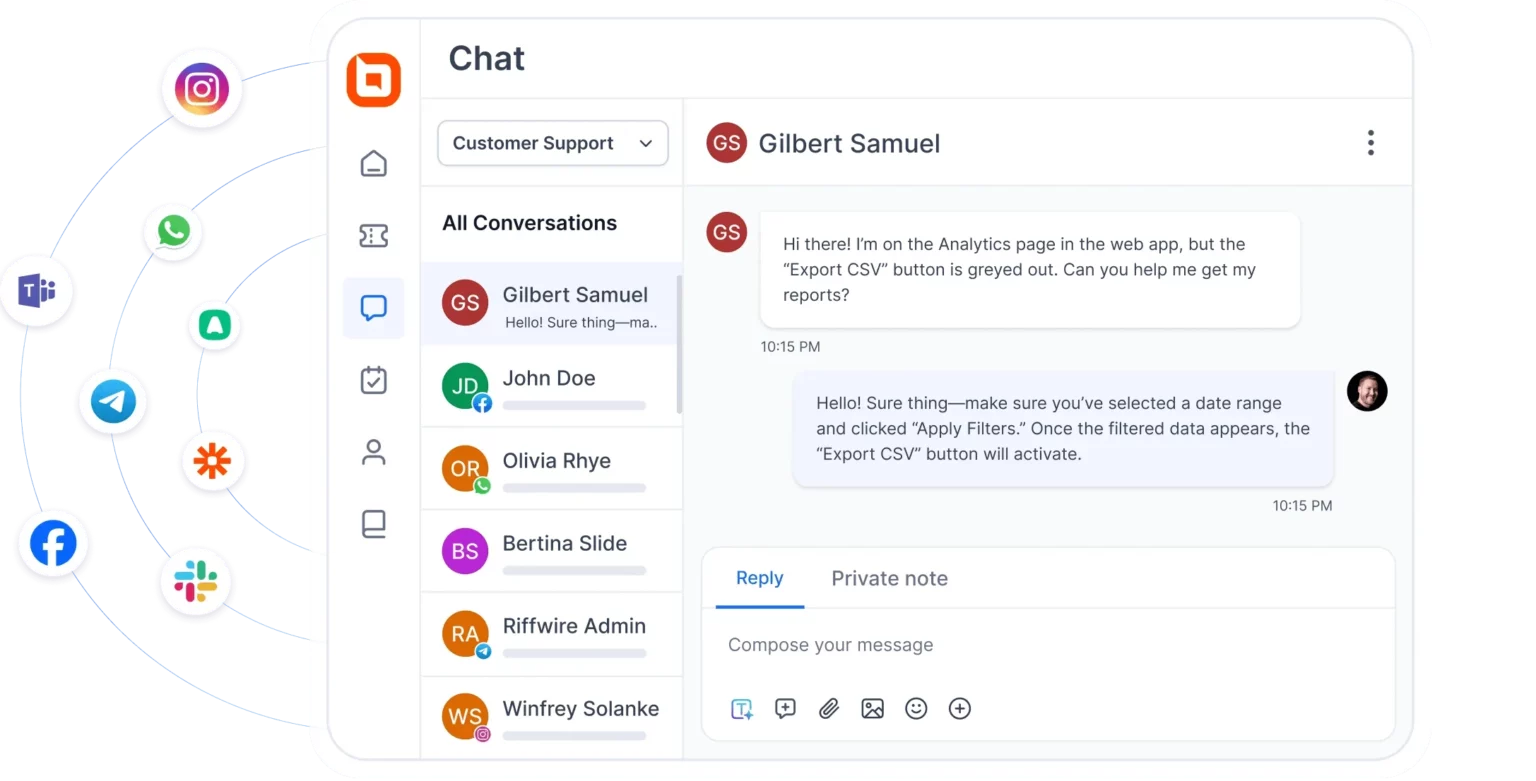
When customers know they can get support how and when they need it, they’re more likely to stay loyal and engaged.
5. Improve your customer support
Customers are more likely to repurchase when they have a positive service experience. You must therefore prove your value by consistently delivering good customer service.
A Microsoft study reveals that a poor customer experience has led 56% of respondents to cease doing business with a particular brand.
Demonstrate unwavering commitment to excellent support by:
- Responding to inquiries with immediacy
- Empowering customers with self-service options
- Use artificial intelligence in your customer service to streamline workflows
- Equipping your support staff with targeted training
- Monitoring progress against precise metrics
Consistent, high-quality customer service boosts repurchase rates and cultivates genuine loyalty.
6. Implement a customer loyalty program
A customer loyalty program is a structured marketing initiative implemented by businesses to incentivize repeat purchases and foster ongoing engagement from customers.
When brands appreciate loyal customers, they cultivate enduring relationships that drive sustainable growth. Such recognition not only reinforces customer appreciation but also motivates them to spend more on your business.
Brand-loyal customers are more likely to:
- Make repeat purchases
- Refer others
- Provide valuable feedback
You can reward loyalty through acknowledgements, personalized discounts, exclusive offers, loyalty points and VIP access experiences.
7. Quickly address customer support inquiries
One key strategy to improve customer retention is to provide a quick response to support inquiries.
According to a report commissioned by Emplifi, 52% of customers anticipate a response from a brand within an hour.
When users reach out with a support inquiry, they are looking for immediate assistance.
Delays in response can lead to frustration and dissatisfaction, which can, in turn, impact their loyalty to your brand.
By promptly addressing support inquiries, you can demonstrate your commitment to customers’ needs and enhance their overall experience.
8. Personalize your customer service
Personalized customer service serves as a powerful mechanism for businesses to maintain client loyalty. It entails customizing products or services to align with the specific needs and preferences of individual clients.
Examples of customer service personalization range from basic elements, such as using a client’s name in correspondence, to advanced applications like tailored product suggestions derived from prior purchases.
It is essential to execute personalization while upholding client privacy and adhering to relevant data protection standards.
9. Provide excellent after-sales service
After-sales service plays a key role in building a loyal customer base. It covers all the support provided to clients once they purchase or begin using a product or service.
This includes installation, repairs and maintenance, customer support, warranties and returns, upgrades, and replacements.
To deliver outstanding after-sales service, consider these strategies:
- Follow up regularly: Check in with customers periodically to confirm their satisfaction with the purchase.
- Offer ongoing support: Provide continued assistance, such as technical help, advice, or training, even after the sale.
- Show appreciation: Express gratitude through a simple thank you note.
Ultimately, the focus of after-sales service is to ensure customer satisfaction and foster lasting relationships.
10. Offer competitive pricing and deals
Competitive pricing and targeted deals are key tools for businesses to keep clients engaged. By using them well, companies can help customers feel they receive strong value, making them less likely to turn to competitors and more committed to the brand.
Perform regular market research to track changes in industry trends. This knowledge allows you to set prices that are both competitive and profitable.
However, these strategies go beyond just matching prices; they focus on providing overall value. Building strong customer relationships by listening to their needs and offering reliable service is equally vital for true client retention.
6 Great customer retention examples
Here are some customer retention examples featuring real brands, showcasing various strategies to keep customers engaged and loyal.
Sephora Beauty Insider—Loyalty rewards
Sephora‘s tiered loyalty program offers a compelling case study. Customers earn points for purchases, receive birthday gifts, and gain access to exclusive sales and events.
Why it works: These rewards encourage repeat business and personalize the shopping experience for beauty enthusiasts.
Amazon Prime—Subscription perks and convenience
The Amazon Prime subscription service offers a collection of benefits like free, fast shipping; exclusive deals; a streaming service; and early access to deals.
Why it works: Amazon Prime incentivizes customers to become Prime members to access exclusive deals that create a strong lock-in making it harder for members to switch to competitors.
Spotify Premium—Personalized music experience and ad-free listening
Spotify Premium provides an ad-free listening experience, on-demand music selection, and the ability to download music for offline playback.
Why it works: Spotify Premium features address key desires of music lovers and justify the subscription fees compared to the ad-supported version, encouraging users to upgrade and maintain their premium subscriptions.
Peloton All-Access Membership—Interactive fitness and community engagement
Peloton offers high-tech bikes and treadmills with built-in screens that allow users to participate in live and on-demand fitness classes. Peloton bikes are a significant investment, but the Peloton all-access membership further strengthens customer retention.
Why this works: This all-access membership that offers a combination of premium equipment, interactive classes, and a supportive community creates an experience that keeps users coming back for more.
REI Co-Op membership—Long-term investment and shared ownership
REI‘s unique lifetime membership program requires a one-time fee that unlocks annual dividends on purchases, gear rentals, and exclusive discounts on products and events.
Why it works: REI’s co-op membership model enhances of commitment and reciprocity, as members feel invested after paying a one-time fee and are motivated to shop at REI to maximize benefits.
Future-proof your business with effective customer retention tactics
Use proven customer retention strategies as a roadmap to create exceptional experiences that keep customers coming back, helping your customer base and revenue grow together.
Ready to take retention to the next level? BoldDesk help desk software empowers your team to deliver fast responses, resolve issues quickly, gain actionable insights through reporting and analytics, and collect precise customer feedback.
Book a live demo today to discover how BoldDesk can strengthen customer relationships and drive retention. Start your free trial today or take a detailed product tour to explore its powerful features. Have any questions? Don’t hesitate to contact our support.
We would love to hear from you. What customer retention strategies have worked best for your team? Share your thoughts or tips in the comments below!
Related articles
- Best techniques for reducing customer service response time
- Most essential customer service skills
- Guidelines for customer service for any business
- 8 Strategies to Provide Efficient Customer Service
Frequently Asked Questions
A good customer retention rate varies by industry, but most businesses aim for 70–90% retention. For example, according to Demandsage professional services average around 84%, automotive around 83%, finance 78%, and software 77%.
A customer retention program is a strategic approach implemented by businesses to maintain and enhance relationships with existing customers. Some popular customer retention initiatives include VIP programs, loyalty and reward programs, and proactive customer support.
Help desk software enhances customer retention in the following ways:
- Centralizes interactions for faster responses and resolutions leading to higher customer satisfaction.
- Automates routing to cut backlog and prevent ticket reopen issues.
- Provides analytics to monitor CSAT, CES, NPS, and deflection, predicting churn early.
- Integrates with CRM, billing, and product tools for closed-loop actions like outreach after failed payments.
All of this leads to quicker resolutions, proactive support, and a seamless experience that keeps customers coming back.
Personalization means tailoring experiences and communications to each customer’s preferences and behaviours. It makes customers feel valued, improving satisfaction and loyalty.
Examples across channels:
- Email: Replenishment reminders for frequently purchased items.
- In-App: Onboarding checklists based on user goals.
- Web: Dynamic content showing relevant products or offers.
Personalized interactions drive engagement, reduce churn, and strengthen long-term relationships.
Businesses can implement a customer loyalty program in the following ways:
- Offering rewards or points for repeat purchases.
- Providing exclusive discounts or early access to products.
- Recognizing and celebrating customer milestones.
- Encouraging referrals by incentivizing customers to bring in new clients.
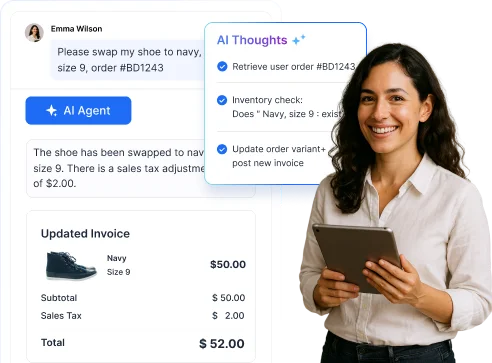


















 Email Ticketing System
Email Ticketing System Shared Inbox Software
Shared Inbox Software Multi Brand Help Desk
Multi Brand Help Desk Internal Help Desk Software
Internal Help Desk Software Trouble Ticketing Software
Trouble Ticketing Software Mobile Help Desk
Mobile Help Desk 









